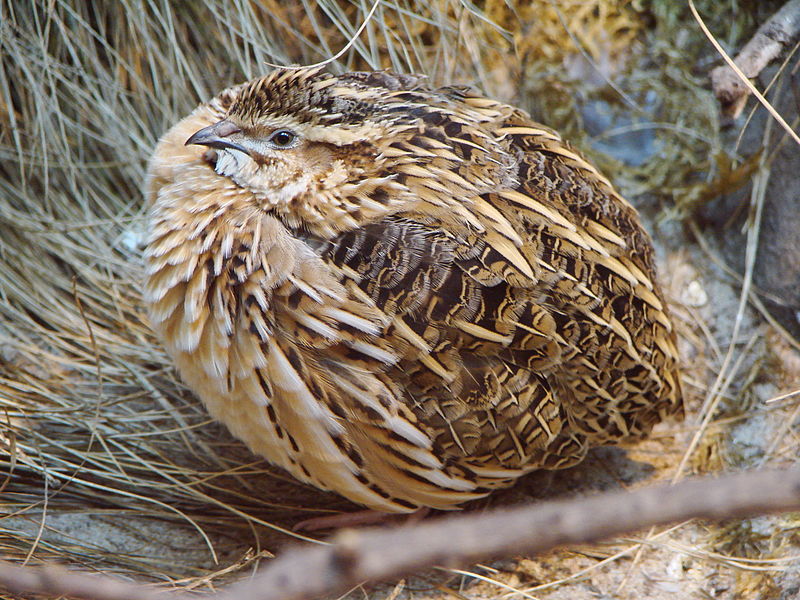Difference between revisions of "Realia:שְׂלָו – Fish or Fowl/0"
(Original Author: Neima Novetsky, Rabbi Hillel Novetsky) |
(Original Author: Neima Novetsky, Rabbi Hillel Novetsky) |
||
| Line 5: | Line 5: | ||
| − | <p style="text-align:center"><a class="pdfright" href="Media/2Shemot/16/ | + | <p style="text-align:center"><a class="pdfright" href="/Media/2Shemot/16/שְׂלָו – Fish or Fowl/Topic.pdf">PDF Version</a></p> |
<div class="overview"> | <div class="overview"> | ||
| Line 54: | Line 54: | ||
<content>by Guérin Nicolas</content> | <content>by Guérin Nicolas</content> | ||
</row> | </row> | ||
| − | <image style="max-width:100%;width:100%;" src="Media/Realia/2Fauna/Coturnix.jpg" alt="Coturnix" title="Coturnix"/> | + | <image style="max-width:100%;width:100%;" src="/Media/Realia/2Fauna/Coturnix.jpg" alt="Coturnix" title="Coturnix"/> |
--> | --> | ||
</infobox> | </infobox> | ||
| Line 100: | Line 100: | ||
<content>by Guérin Nicolas</content> | <content>by Guérin Nicolas</content> | ||
</row> | </row> | ||
| − | <image style="max-width:100%;width:100%;" src="Media/Realia/2Fauna/Coturnix.jpg" alt="Coturnix" title="Coturnix"/> | + | <image style="max-width:100%;width:100%;" src="/Media/Realia/2Fauna/Coturnix.jpg" alt="Coturnix" title="Coturnix"/> |
</infobox> | </infobox> | ||
Version as of 17:06, 20 January 2015
שְׂלָו – Fish or Fowl
| Part of Speech | Noun |
|---|---|
| Occurrences | 4 (in 3 texts) |
| Possible Identifications |
|
| Related Words |
Overview
Almost all scholars identify the "שְׂלָו" with the common quail, a bird from the pheasant family. Every fall and spring, on their route between Europe and Africa, quail migrate over the sea, landing in the Sinai desert. They arrive exhausted and are easy prey for hunters. Some quail have been found to be poisonous, causing paralysis and even death. The miracle of the "שְׂלָו" in Shemot and the accompanying plague described in Bemidbar can thus be understood on the backdrop of the quail's natural migration patterns and characteristics. However, there is also a minority opinion which posits that the "שְׂלָו" is a fish, and there are several features of the Biblical account which might support such an identification.
Biblical Occurrences
The "שְׂלָו" is mentioned in only two stories in Torah, and these episodes are referenced in two additional places in Tehillim.1
- Shemot 16:12-13 – When the nation requests food in the desert, Hashem provides them with both manna and "שְׂלָו".
- Bemidbar 11:18-34 – When the nation complains about the manna, Hashem brings them "שְׂלָו" as a punishment, and many people die upon eating the "שְׂלָו".
- Tehillim 78:26-31 – In reviewing many of the nation's sins, the Psalm recounts the events of Bemidbar 11. The term "שְׂלָו" is not used, but rather "עוֹף כָּנָף".
- Tehillim 105:40 – This Psalm briefly mentions the story of Shemot 16 in the context of its historical survey.
Rabbinic Sources
- Bavli Yoma states that there are four species of "סליו": שיכלי, קיבלי, פסיוני, and שליו.2
Identification Options
1. Common Quail
| Modern Hebrew | שליו |
|---|---|
| Scientific | Coturnix coturnix |
| Picture | by Guérin Nicolas |
 | |
Tehillim 78:27 appears to imply that the "שְׂלָו" was a bird, and most commentators3 agree that the "שְׂלָו" mentioned in the Torah should be identified with the common quail.4 This identification is based on early translations, a continuous tradition of hunting and eating quail, and characteristics of the quail which match the Biblical description:
Translations
- Targum Pseudo-Jonathan translates "שְׂלָו" as פִּיסְיוֹנִין (the pheasant family of which quail are a part).5
- The LXX translates it as ortygometra. This is a related species, known in Hebrew as מלכישליו (king of the selav), as it is slightly bigger than the regular quail and often joins the migrating quail pack.
Traditions
Relationship to the Biblical Account
There are many points of contact between what we know about the common quail and the description of the "שְׂלָו" in Bemidbar 11:18-34 and Tehillim 78:26-31.
2. Fish
A minority opinion maintains that the "שְׂלָו" were a type of fish rather than birds. This approach is taken by a 14th century work called ספר מאור האפלה24 and is expanded on by R. Michael Dushinsky.25
Relationship to the Biblical Account
While this identification is not supported by the verse in Tehillim 78:27 which speaks of Hashem raining down fowl, it does illuminate several noteworthy features of the Biblical account.